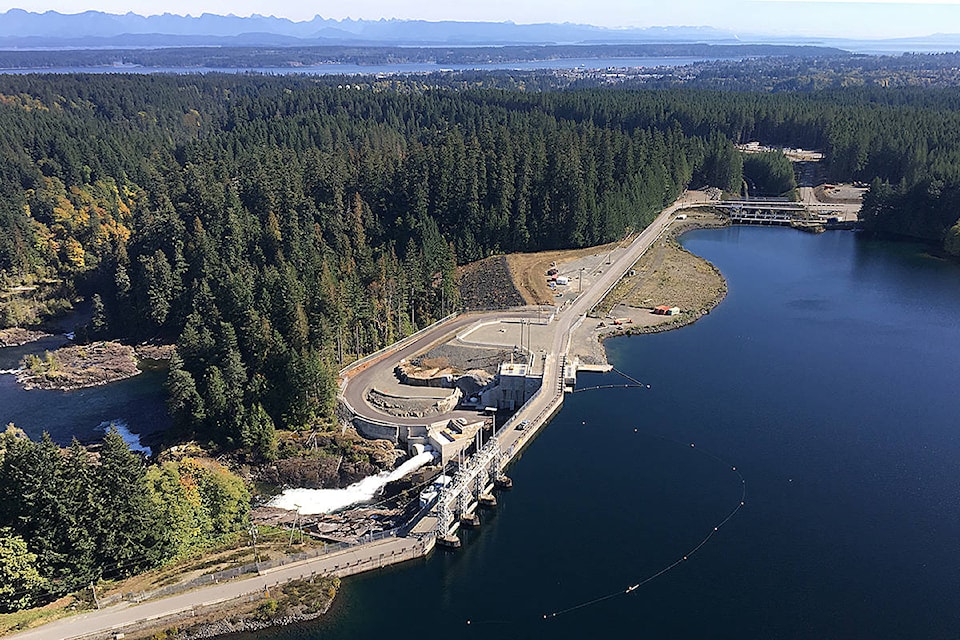BC Hydro discovered that it won’t need to drawdown the reservoir in order to continue seismic upgrade of John Hart Dam.
The planned seismic upgrades to the John Hart Dam are targeted to strengthen the dam so that it can withstand a severe earthquake.
BC Hydro had been working on the premise that a reservoir drawdown would be needed to remove a layer of loose soil from the bottom of the John Hart reservoir to complete the proposed seismic upgrades. This would mean lowering the reservoir level by about 10 metres during the construction period.
Recent site investigations now indicate that the drawdown is unlikely to be needed. If confirmed during the next stages of design and construction planning, this will be a positive development for the project and the community.
“The reason for the shift is this past summer’s drilling results in the reservoir were better than expected,” said BC Hydro’s Stephen Watson. “Over the last three years of project planning we’ve been expecting that we would need a reservoir drawdown, but this summer’s drilling work results showed that the soils on the bottom of the reservoir just upstream of the middle earthfill dam were more compact than anticipated. We’ve now determined that a reservoir drawdown during the construction period is unlikely to be needed.”
Hydro is now focused on the planning for isolating the work areas within the reservoir near the dam now that the entire reservoir area is not likely to be impacted from a drawdown.
“It looks like a dredging process may be used to remove the top layer of loose material along the reservoir bottom to get to the good compacted soils, and then we will place rock material within those areas to widen the dam in strengthening its seismic withstand,” said Watson. “Turbidity will be isolated to specific in-reservoir work zones by silt curtains that will hang from the reservoir surface to the bottom. We expect this to keep the turbidity away from the city’s water supply intake and from going downstream into the salmon habitat. This is good news for domestic water supply and fish habitat considerations.”
BC Hydro has been meeting with First Nations, government agencies and stakeholders on potential mitigation options for domestic water supply and fish considerations, on concerns about elevated turbidity or water cloudiness because of the reservoir drawdown. One such group who heard the good news on Nov. 7 was BC Hydro’s two-dozen stakeholders within its community liaison committee. Mayor Andy Adams is one of the long-time city representatives on the committee.
“The city certainly supports the improvements to dam safety and we have been actively involved in this discussion around safeguarding community drinking water and salmon habitat,” said Mayor Adams. “The results of the drilling work and news that Hydro is unlikely to need to draw down the reservoir is very positive for the entire community. For the city, it lets us move away from planning and funding an expensive and complex filtration system, which is something that would take years to put in place. Getting an indication that turbidity probably will not be an issue for the city water supply during this major project also means the community won’t be facing potential boil water advisories – most welcome news.”
Hydro has been consulting First Nations for years on the project, including the Wei Wai Kum Nation, whose residential community is downstream of the dam beside the estuary.
“Our First Nation has never been consulted when this dam system was built and the safety of our people from a catastrophic failure has long been a concern,” said Wei Wai Kum Nation Chief, Chris Roberts. “This project is about downstream community safety and we support a seismically safe dam. Yet we were concerned about the lowering of the reservoir and the resulting turbidity that could have impacted the community’s drinking water, along with how that would impact fish and fish habitat. It appears that now those two issues are looking much better.”
BC Hydro is in the design stage of the proposed project that will see upgrades to the earthfill sections of the dam, create a passive overflow spillway under the road deck near the spillway, to the replacement of the three spillway gates and related works. Project construction may begin in 2022.
